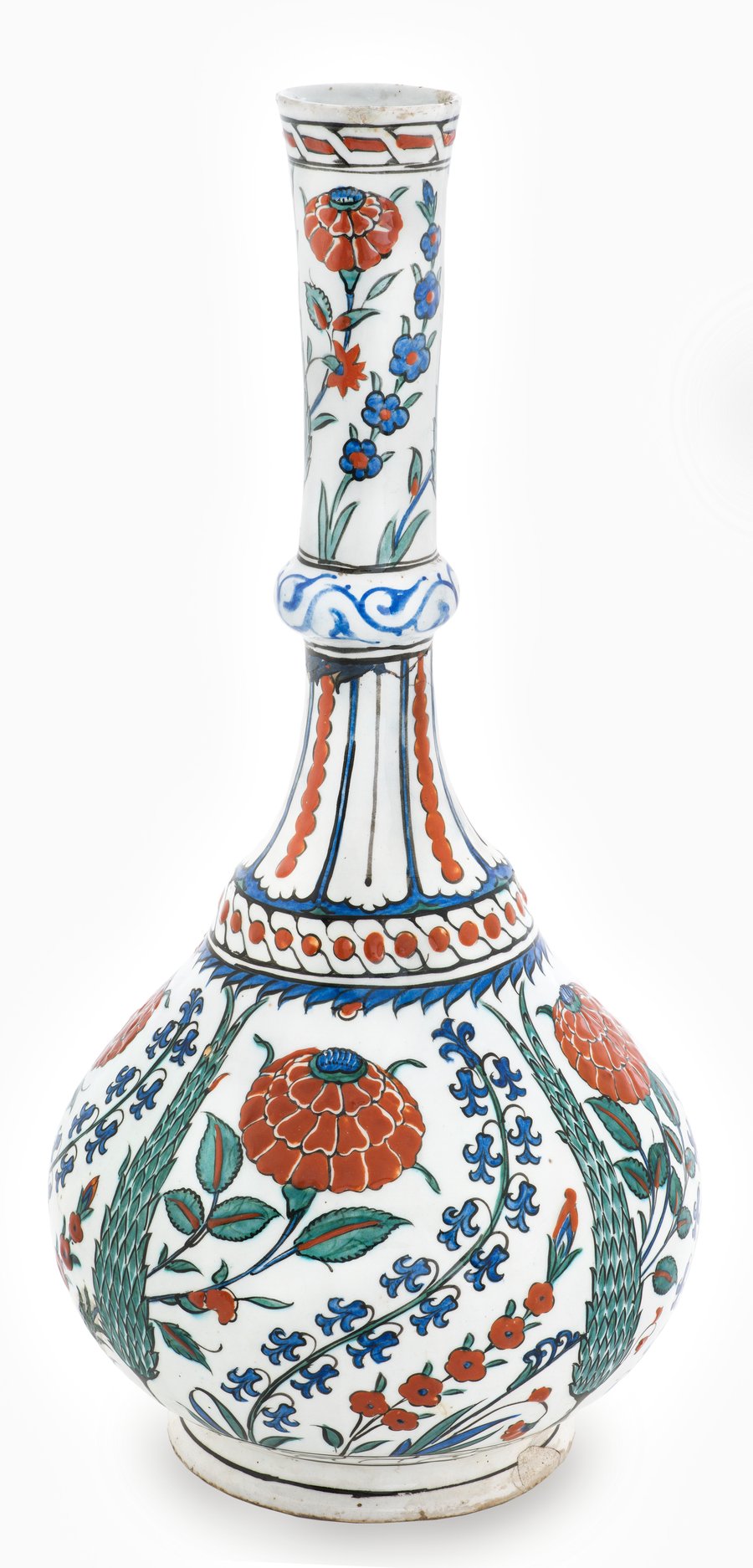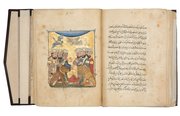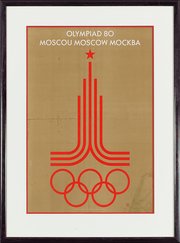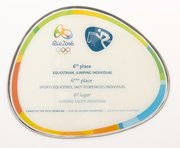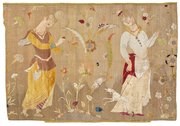
Iznik Bottle (Surahi)
Museum of Islamic Art
- Title:
- Iznik Bottle (Surahi)
- Production place:
- Iznik
- Date:
- 1560 - 1580
- Period:
- Ottoman
- Title:
- Iznik Bottle (Surahi)
- Production place:
- Iznik
- Date:
- 1560 - 1580
- Period:
- Ottoman
- Material:
- Fritware, Pigment, Glaze
- Technique:
- Underglaze painting, Glazing
- Dimensions:
- 47.3
- Diameter:
- 22.9
Iznik pottery is named after the town of Iznik, in western Anatolia (modern day Turkey), where it was initially made. The earliest evidence of Iznik production occurred during the reign of Ottoman Sultan Mehmed II (r. 855-886 AH/r. 1451-1481 CE), whose appreciation for fine blue and white Chinese Ming porcelains inspired him to start making similar ceramics. As such, early Iznik pottery was blue and white, and largely influenced by Chinese motifs. This surahi (water bottle) was produced between 967-988 AH/ 1560-1580 CE, a period considered to be the height of Iznik production when new forms, colours and patterns were introduced. Its elegant shape, with its slender elongated neck extending to a slightly wider rim, shows the expansion of Iznik fritware production. It is decorated with newly introduced colours such as vibrant red and green in addition to the original blue and white, and the patterns consist of a carefully distributed arabesque and floral designs, including cypress trees and flowers. This bottle could have possibly been used as a vase, with fresh flowers sprouting from the floral motifs.
